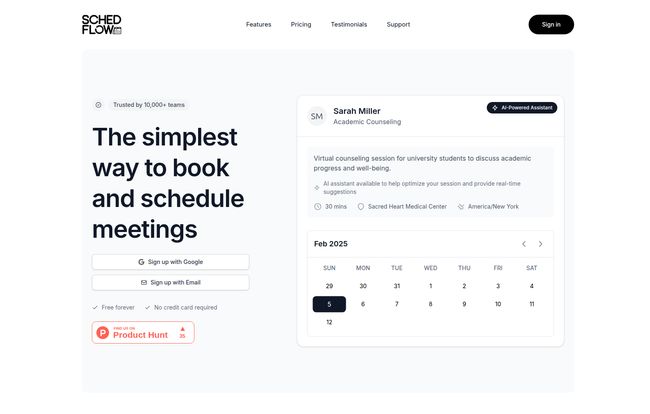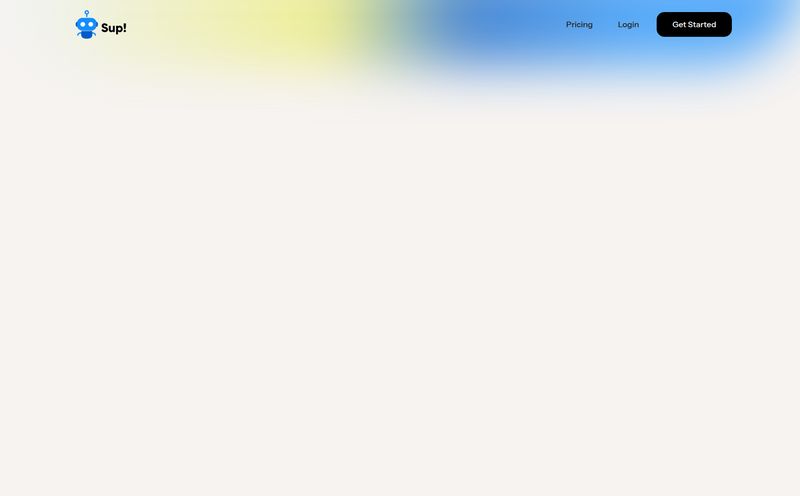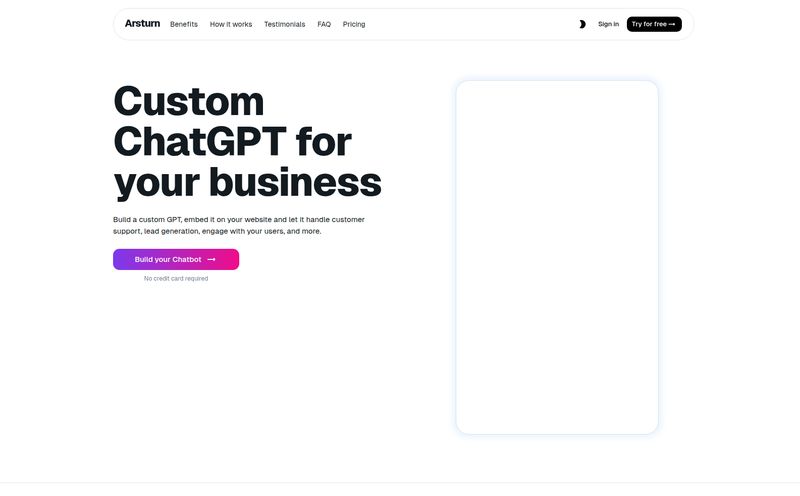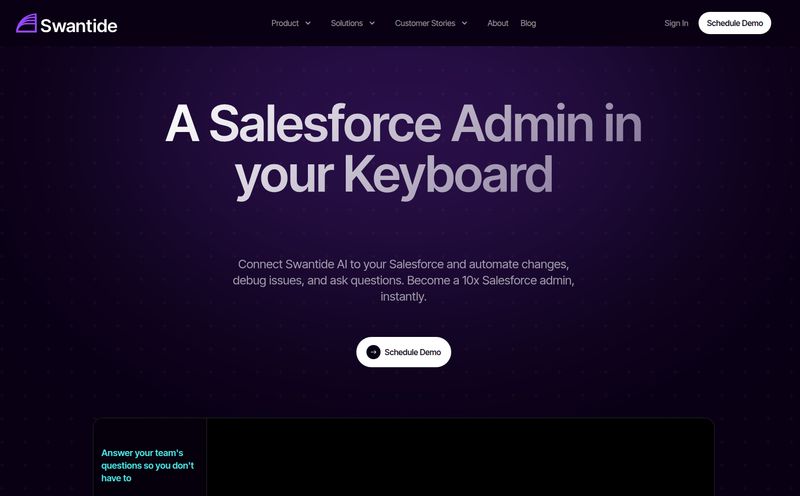How much of your week is spent playing 'Calendar Tetris'? You know the game. That endless, soul-crushing email chain: “Does Tuesday at 2 work?” “Ah, no, how about Wednesday morning?” “I can do 10:30, but not 10.” It’s a productivity black hole, and frankly, I'm over it.
For years, I've relied on a patchwork of tools to keep my schedule from completely imploding. But I'm always on the lookout for something… better. Something that doesn’t just book a time slot but actually understands the flow of work. So when SchedFlow popped up on my radar, claiming to be the “simplest way to book and schedule meetings,” my curiosity was officially piqued. Another scheduler? Maybe. But the more I looked, the more I realised it might be something more.
So, I did what any self-respecting, traffic-obsessed blogger would do: I spent some time with it. And I have some thoughts.

Visit SchedFlow
So What Is SchedFlow, Really?
On the surface, SchedFlow looks like a clean, modern scheduling tool. It helps you book meetings, manage your calendar, and share your availability. Standard stuff, right? But that’s like saying a smartphone is just for making calls. The real magic is under the hood.
SchedFlow bills itself as a platform to simplify not just scheduling, but your entire project management workflow. It’s designed to be the connective tissue between an idea and a completed task. It’s not just for big-shot agencies with dozens of project managers; it feels built for the freelancer juggling five clients, the consultant who lives by their calendar, or the small team trying to stay in sync without a million different apps. The goal is to stop the constant app-switching and bring some sanity back to your workday.
The Core Features That Actually Matter
I’ve seen a million feature lists. Most are just fluff. But a few things about SchedFlow stood out to me as genuinely useful. Here’s the breakdown.
Effortless Appointment Scheduling
First and foremost, it has to nail the basics. And it does. The smart appointment scheduling shows your real-time availability, so there's no chance of getting double-booked. A client clicks your link, sees when you’re free, picks a time, and boom—it’s in the calendar. This is the baseline for any modern meeting planner, and SchedFlow delivers it with a clean, no-fuss interface that your clients won’t get lost in. It just works.
Automated Task Flows Are a Big Deal
This is where things get interesting. SchedFlow isn’t just about the meeting itself; it’s about what happens before and after. Think about it: before a client consultation, you need them to fill out an intake form. After, you need to send a follow-up email, maybe create a task in your project manager. SchedFlow’s automated task flows let you build these sequences. It’s like setting up a line of dominos. The meeting getting booked is the first domino to fall, and it triggers everything else automatically. For a guy like me who loves efficiency, this is gold. It’s the kind of business scheduling automation that actually saves you brainpower.
Of Course, It Has Calendar Sync
It almost goes without saying, but the seamless calendar sync with Google Calendar is there. This is non-negotiable in 2024. Seeing it sync instantly across my phone and desktop gave me that little sigh of relief. While the website focuses heavily on Google, they claim over 50+ integrations, so one would hope that Outlook and other major players are on that list. I’d check their documentation to be sure if you’re living in a Microsoft world.
An AI Assistant in Your Scheduler? Okay, I'm Listening.
Now for the feature that made me sit up straight. An AI-Powered Assistant. I've seen AI everywhere, often as a gimmick. But here, it seems… practical. The idea is that the AI can help “optimize your session and provide real-time suggestions.”
What does that even mean? I imagine it like this: you’re in a discovery call, and the AI could prompt you with a question you forgot to ask based on the meeting’s description. Or maybe it suggests a follow-up action item. It feels a bit like having a co-pilot. I am both incredibly intrigued and a little skeptical about its real-world application, but the potential is huge. It moves SchedFlow from being a simple booking tool to a genuine productivity partner. This could be a true differentiator in a very crowded market.
My Honest, No-Fluff Take on SchedFlow
Alright, let’s get down to it. No tool is perfect. In my experience, it’s all about finding the right set of trade-offs for your specific needs.
What’s to love? The platform is just so intuitive. There’s no steep learning curve. The focus on workflow automation is a massive plus for anyone looking to reclaim their time. And the free plan is genuinely useful for getting started, which I always appreciate. It shows confidence in the product. You get the basic scheduling, reminders, and notifications without dropping a dime.
But there are a few things to keep in mind. The free plan is, naturally, a bit limited. If you want the full power of those automated workflows and the AI assistant, you'll likely need a paid plan. The pricing for those isn’t listed on the site—you have to “Contact us for a custom plan.” Personally, I find this a bit frustrating. I prefer transparent, tiered pricing so I know what I’m getting into. And as I mentioned, the explicit focus on Google Calendar might leave Outlook or Apple Calendar users wondering where they stand.
So, What's the Price Tag on This Simplicity?
This is often the dealbreaker, isn't it? As I said, SchedFlow’s approach is a little different. Here's a quick look at what they offer:
| Plan | Cost | Best For |
|---|---|---|
| Free Plan | $0 | Personal use, freelancers, or just trying it out. Includes basic scheduling & reminders. |
| Custom Plan | Contact for Price | Teams and businesses needing advanced features like full automation and the AI assistant. |
The good news is that they say all plans include a 14-day free trial, so you can test the premium waters before committing. While I’m not a fan of opaque pricing, for some businesses, a custom plan can mean not paying for features you don’t need. It’s a double-edged sword.
Is SchedFlow the Right Scheduling Tool For You?
So, the big question. Should you give it a try?
If you're a freelancer, consultant, or part of a small team that feels like they’re drowning in administrative tasks, my answer is a resounding yes. The free plan is a no-brainer to start with. The potential to automate your pre- and post-meeting workflow is where SchedFlow really shines and could easily justify a paid plan.
If you're a large enterprise with a super complex tech stack and need deep, native integrations with obscure CRM’s, you might need to do a bit more homework and talk to their sales team. But for the 90% of us just trying to make team scheduling and client booking less of a chore, SchedFlow presents a very compelling case. It’s simple on the surface, powerful underneath—and that's a combination I really like.
Final Thoughts
Look, the world of scheduling apps is crowded. It's tough to stand out. But SchedFlow isn't just another Calendly clone. By integrating smart automation and a forward-thinking AI assistant, it’s aiming higher. It wants to be the central hub for your client interactions, not just a way to put a meeting on the books. It feels less like a tool and more like a system. And in the chaotic world of digital work, having a good system is everything.
Frequently Asked Questions about SchedFlow
- 1. Is SchedFlow really free to use?
- Yes! SchedFlow offers a free-forever plan that's perfect for personal use. It covers basic scheduling, email reminders, and notifications. For more advanced features like task automation and the AI assistant, you'll need to look at their custom paid plans.
- 2. Does SchedFlow integrate with calendars other than Google Calendar?
- The website heavily features its seamless integration with Google Calendar. While it mentions having 50+ integrations, it doesn't specify if Outlook or Apple Calendar are among them. It's best to check their documentation or contact support for the most current list.
- 3. What does the AI-Powered Assistant actually do?
- The AI-Powered Assistant is designed to enhance your meetings. It provides real-time suggestions to help optimize the session, which could include posing relevant questions, suggesting talking points, or identifying action items to ensure a productive conversation.
- 4. Who is the ideal user for SchedFlow?
- SchedFlow is great for a wide range of users, but it's especially beneficial for freelancers, consultants, and small to medium-sized teams who want to automate their workflows and reduce the administrative burden of scheduling and meeting management.
- 5. How is SchedFlow different from other scheduling tools?
- Its main differentiators are the built-in Automated Task Flows, which manage tasks before and after meetings, and the unique AI-Powered Assistant that provides real-time help during your sessions. This shifts its focus from simple booking to overall workflow productivity.
- 6. What kind of customer support can I expect?
- SchedFlow offers several support channels. They provide detailed documentation for self-help, live chat for immediate assistance, and email support with a promise to get back to you within 24 hours.



